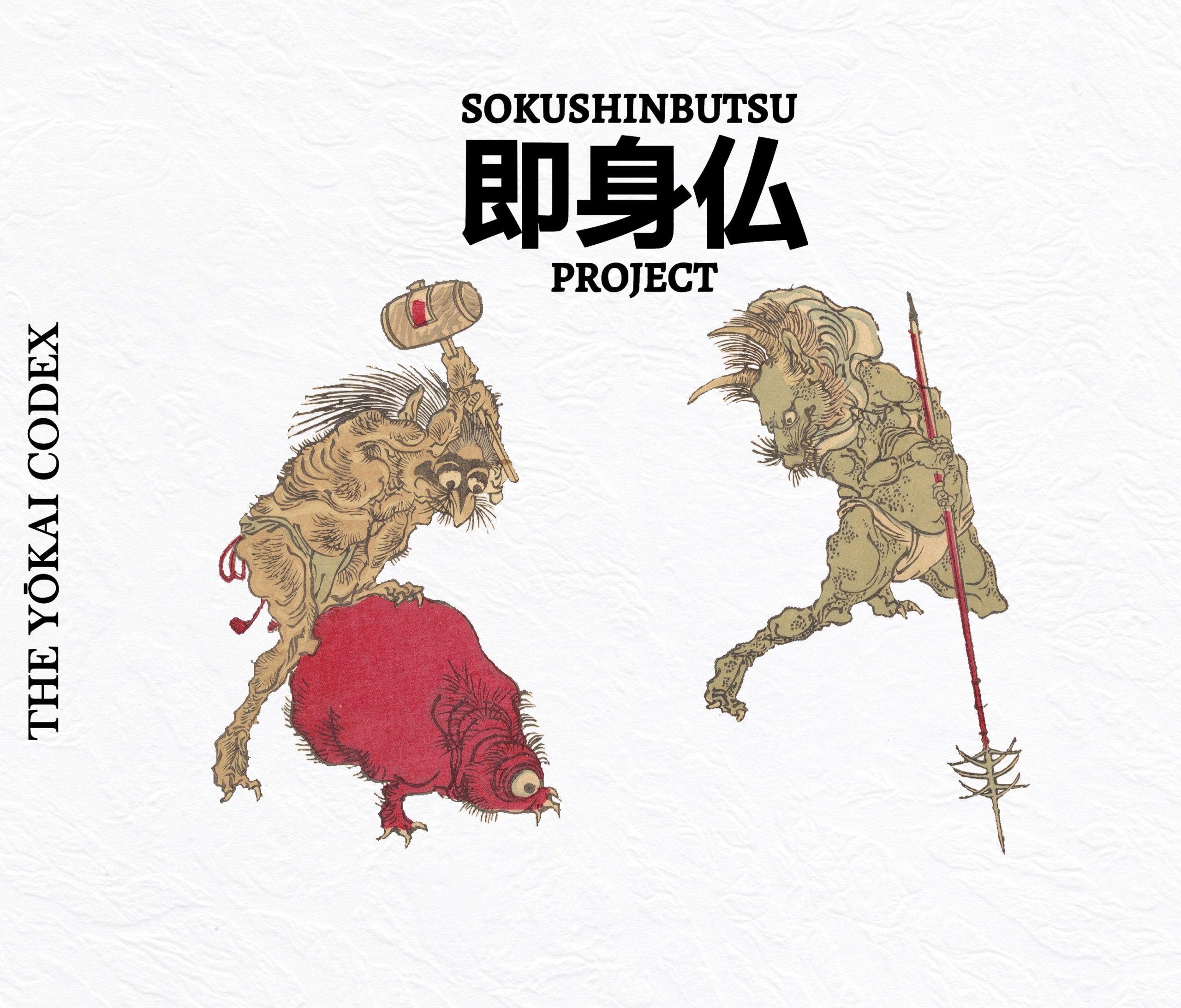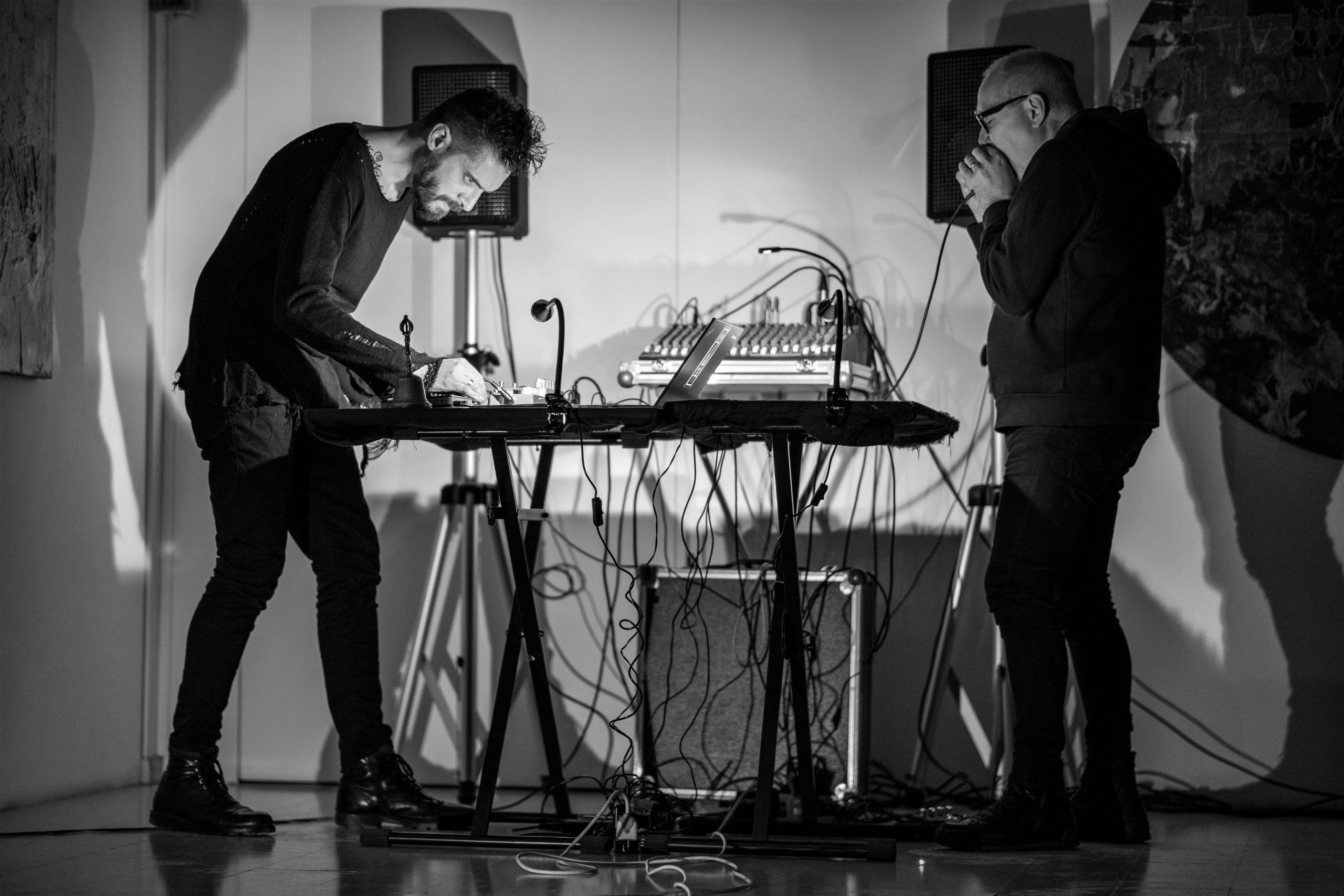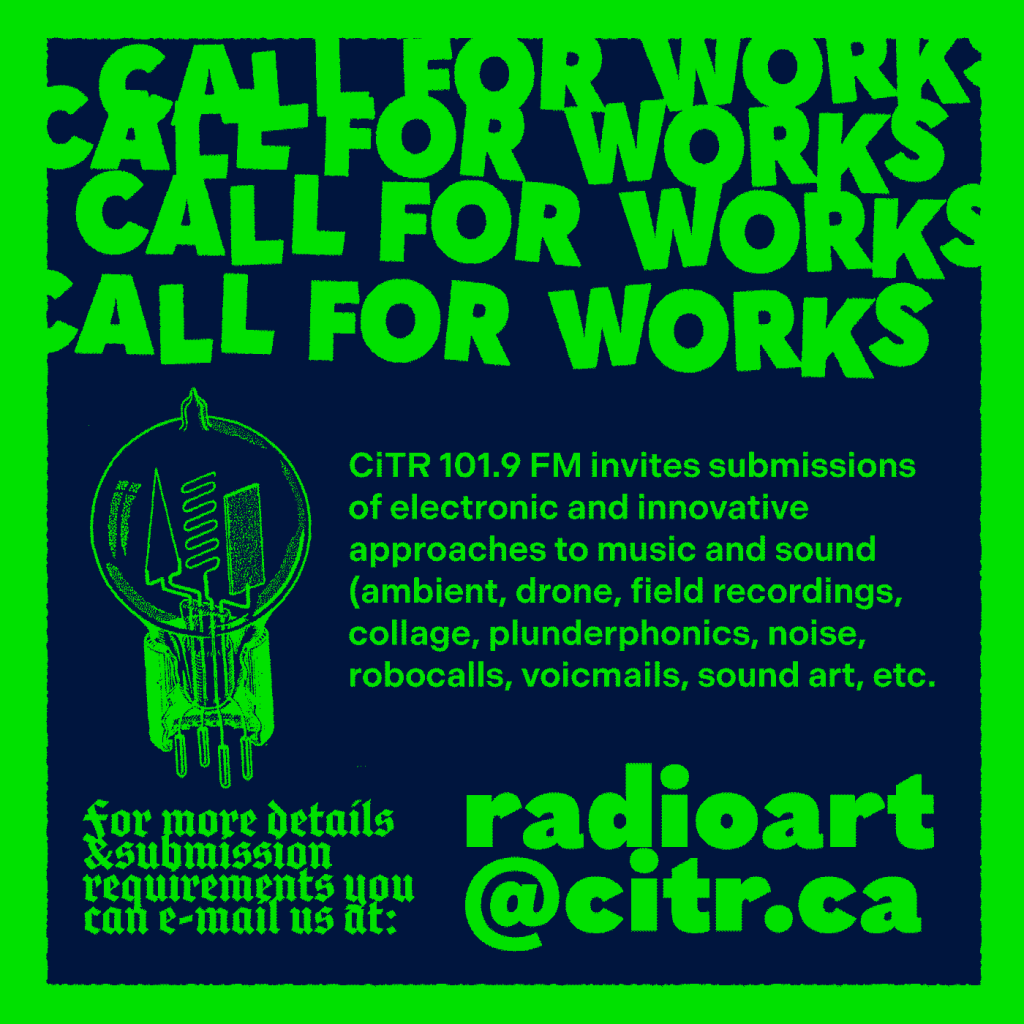CITR’s 24 Hours of Radio Art in a snack sized format. Dark Ambient. Drone. Field Recordings. Noise. Sound Art. Or something.
Tonight’s broadcast features Aki Onda, drøne w/ Julia Mariko, Philip Marshall, Sokushinbutsu Project, plus more new Olivia Louvel and Nagarekeri.
Starting at Midnight Pacific on CiTR 101.9FM, streaming at PLAYER.CITR.CA
======================
Sokushinbutsu Project Interview By Mark Hjorthoy
For the past few years Italian power electronics / noise duo Sokushinbutsu Project have been regular features on CITR radio. Their sound is aggressive. It is grating at times. It is grating at most times. And that’s a good thing! “Tributes” to Neil Sedaka, Diana Ross, and The Knack on their ‘5980 – Patto Generazionale‘ release, ensure there’s some humour to be found in there as well. With the two month countdown now on until CITR’s highly-anticipated 24 Hours of Radio Art 2024 programming, Sokushinbutsu Project’s Massimo Mascheroni and Enrico Ponzoni spoke with Mark Hjorthoy about their latest record ‘The Yōkai Codex’.

Do you have a fully formed plan for releases ahead of time, or does the music reveal the story?
E / M: It depends. On the first two records we decided on a theme which served to guide us in the creation of the tracks and in the search for sounds. On our latest – ‘The Yōkai Codex’ – we searched for sounds and noises arbitrarily. It was only after having composed most of the pieces that we decided to use the ‘yōkai’ theme – the spirits/demons of Japanese folklore. Along with musical research, we generally like to read up on the topics we deal with through books, articles, and graduate research theses.
How did you start working together? Do you both have specific areas you contribute to for the music?
E: I started in hardcore punk, then moved on to crossover and nu-metal – mainly as a guitarist and singer. After seeing Massimo’s band ODRZ in 2018 at the La Voce del Corpo contemporary art festival, a friendship was born. I became curious about experimental, noise and post-industrial music, and started following the Italian scene much more closely.
The following year I took part in the extensive ODRZ66 project, both as the official photographer / videographer and as a musician on a couple of improvisations. It was on these occasions that I began to re-think and change my way of playing guitar; and I approached synthesizers for the first time.
At the conclusion of the first lockdown – and living in the same town – Massimo and I decided to try playing together to create an experimental and very unique project with a strong theme: self-mummification, hence sokushinbutsu.
M: My musical journey started in the early ‘90s with two other musicians and friends – Antonio Maione and Stefano Pagnoncelli. We worked together for almost ten years proposing a mix between industrial and cyber-punk. We produced a couple of DIY tapes.
After Stefano’s departure, Antonio and I decided to move into more experimental territories. For more than 20 years our new band – ODRZ – created a post-industrial / noise / experimentation hybrid, without disdaining risky incursions into the psychedelic field.
The following year we suggested Enrico document our most extensive project ever – ODRZ66 – which consisted of 52 improvisational songs – one improv session every Friday evening for a whole year performed by ODRZ alongside other musicians primarily from the Italian noise, post-industrial, and experimental scene. From there, we got the idea of starting on a musical / artistic journey together – parallel to the one I continue to propose with ODRZ.
Can either of you pinpoint the moment you realized you needed to make experimental music?
M: Personally, I was struck by a live performance by Naked City (Zorn / Frisell / Frith, etc.). From there, I seriously started thinking about my, albeit marginal, contribution to experimental music.
E: I have to admit that before meeting ODRZ, I had almost no idea what experimental music was – apart from some rare exceptions (John Cage, Diamanda Galas, Demetrio Stratos, etc.). So it’s thanks to Massimo and Antonio that I began to approach this panorama!

How have your lives changed since the release of the ‘Sokushinbutsu Project’ record? It’s such an emotional album, and quite frankly made my whole year hearing it.
M: I live a very normal life, so I’d say that it hasn’t changed much for me despite the fact that I am sincerely happy and was favorably surprised by the attention and positive reviews received following its release.
E: As Massimo says, my daily life hasn’t changed. I’m happy to have realized these projects in just a few short years. I’m happy to be able to meet new people through music. In addition – thanks to technology – it is possible to know, talk and share music with other people and other organizations such as CITR Radio.
What story is being told in your composition “Kristu”? Is it spoken in an Italian dialect?
E / M: Yes, the language used is a form of dialect from Lombardy in Northern Italy. At the core of the composition is an amateur recording made by our friend and sound poet Massimo Arrigoni who recited the poem “Cristu” (Eng. “Christ”) by poet and architecture historian Giancarlo Consonni.
In the first version of “Kristu”, the recitation is integral – combined with our synthesizer sounds; while in the second version (“Secondo Kristu”), we sampled his voice, made up of cut-ups and repetitions, and added electric guitar and other synthesizer sounds. As far as the poem is concerned, we don’t know how it came to be and what it was meant to exactly communicate. We really like the historical and anthropological look and feel; and in this case, the use of a poem in our regional slang (Brianza, IT) makes it feel “closer”. The text certainly has concrete, material, and not just religious references. It’s difficult to say whether it is a prayer, a dedication or a lament…
What piece of gear could you not live without?
M: Currently I use a lot of apps on the iPad, so it’s an indispensable tool for me.
E: At the moment I’m using two analog synthesizers: the MiniBrute and the Monotribe – the latter connected to a series of guitar effects. I find these instruments very funny and very versatile, but I’m still a guitarist and I continue to use my Gibson Les Paul electric guitar!
I’ve seen your video where you collaborated with dancers, which was fantastic. Have you collaborated with any other musical artists? If not, who would you like to collaborate with?
E / M: The butoh performance with Alessandra Zerbinati and Marco Casiraghi was very intense. We’re very pleased to have achieved this goal. The video you refer to has exceeded 50,000 views! We are currently looking for other venues where we can propose this performance again. Possibly in Canada!
We love collaborating with other artists and musicians. In addition to the poet Massimo Arrigoni, we’ve collaborated with Marco Casiraghi (ajaeng) and with Andrea Dicò (drums and percussion) on ‘The Yōkai Codex’. Andrea is working with us now on a new project that deals with the theme of time – as the Sokushinbutsu Project Trio. Our next album could be called ‘Kronos’…

